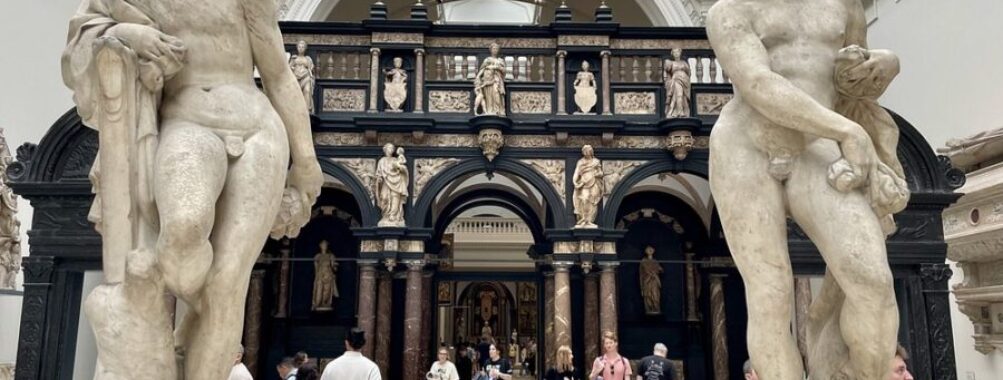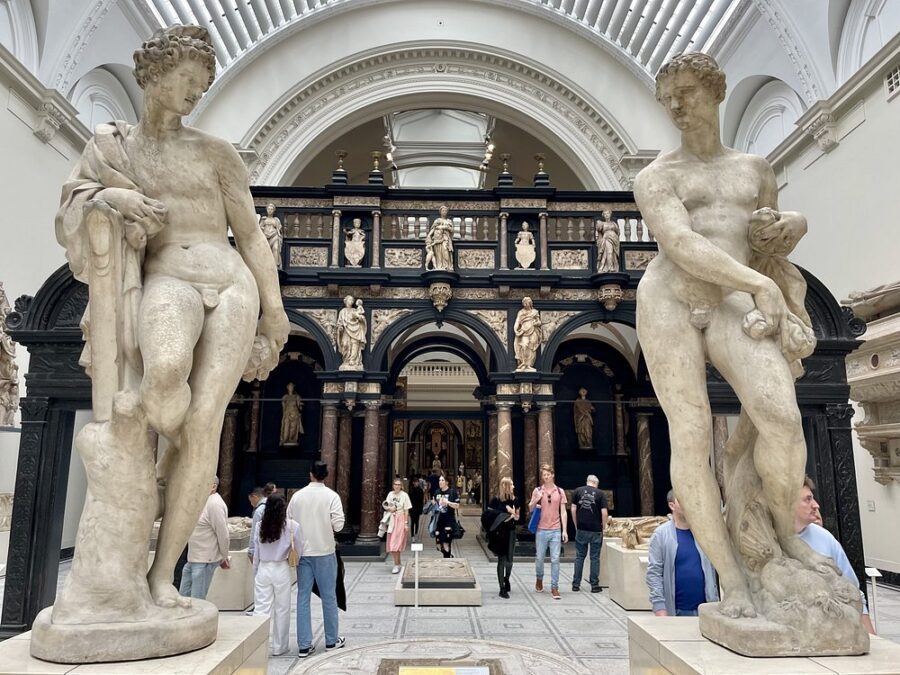
Victoria and Albert Museum
Table of Contents
- History and Significance
- Main Attractions and Activities
- Collection Highlights
- Must-See Temporary Exhibitions (2024)
- Interactive Experiences
- Visitor Experience
- Tips for Visitors
- Accessibility and Facilities
- Unique Features
- Overall Impressions
- Pros and Cons
- Location
- Places to Stay Near Victoria and Albert Museum
- Find and Book a Tour
- Explore More Travel Guides
History and Significance

When Queen Victoria laid the foundation stone in 1899 for what would become the Victoria and Albert Museum, she was cementing more than a building – she was creating the world’s greatest temple to applied arts. Named after herself and her beloved Albert, this South Kensington behemoth began as the Museum of Manufactures in 1852, born from the ashes of the Great Exhibition’s success. Today, it’s 145 galleries across 12.5 acres that house over 2.8 million objects spanning 5,000 years of human creativity.
The V&A’s significance lies not just in its vast collection, but in its radical founding philosophy – that beautiful design should be accessible to all, not just aristocrats. This was where 19th-century factory workers could study Renaissance molds to improve British manufacturing, where art students copied Greek sculptures, and where the term “museum” first expanded beyond dusty antiquities to embrace living design.
Main Attractions and Activities
Collection Highlights
-
The Cast Courts: Two-story galleries housing gargantuan plaster copies of Michelangelo’s David and Trajan’s Column
-
British Galleries: 400 years of design evolution from Tudor oak to Arts and Crafts
-
Jewelry Room: Over 3,000 sparklers, including pieces worn by Elizabeth I
-
Fashion Collection: From 17th-century embroidered gloves to McQueen’s avant-garde creations
-
Islamic Middle East: One of the world’s finest collections of Persian carpets and Iznik pottery
Must-See Temporary Exhibitions (2024)
-
“Fabergé: Romance to Revolution”: Imperial eggs meet Bolshevik upheaval
-
“African Fashion”: The Continent’s vibrant contemporary design scene
-
Hallyu! The Korean Wave: Exploring K-pop’s global design influence
Interactive Experiences
-
Friday Lates: Monthly evening events with cocktails among the ceramics
-
Design Studio: Hands-on workshops in everything from printmaking to CAD
-
Digital Discovery: Augmented reality bringing artifacts to life
-
Sketching Sessions: Pencils and stools provided for drawing from sculptures
Visitor Experience
Entering the V&A’s grand Cromwell Road entrance feels like stepping into an artistic Narnia. The air carries that distinctive museum scent – polished wood, aged paper, and a whisper of stone dust. The gilded Dale Chihuly chandelier in the lobby sets the tone: this is a place where craftsmanship dazzles at every turn.
The museum’s genius lies in its eclectic juxtapositions:
-
Fashion students sketching 18th-century corsets beside Instagrammers snapping the neon “Fight Club” staircase
-
Children giggling at erotic Indian temple carvings while academics take notes
-
Tourists rubbing the worn toe of a replica of Michelangelo for luck
Staff members – from white-gloved conservators to tattooed gallery assistants – share an infectious passion. Ask about any object, and you’ll get stories even the audio guide doesn’t tell – like how the Great Bed of Ware was famous for sleeping twelve… romantically.
Tips for Visitors
-
Free Entry: Permanent collections don’t require tickets (special exhibitions do)
-
Navigation Hack: The museum’s layout is intentionally confusing – embrace getting lost
-
Hidden Gems: Don’t miss the William Morris rooms or Raphael Cartoons
-
Photography: Encouraged (no flash or tripods)
-
Combine Visits: The Natural History and Science Museums are 5 minutes away
-
Eating Options: The Morris Room offers stunning Pre-Raphaelite surroundings
-
Secret Garden: The John Madejski Garden is perfect for contemplation
Accessibility and Facilities
The V&A sets museum accessibility standards:
-
Step-free access to all galleries via lifts
-
Tactile tours with object handling for visually impaired visitors
-
British Sign Language multimedia guides
-
Autism-friendly morning openings
-
Wheelchairs and scooters are available free
Amenities delight:
-
Six eateries ranging from elegant to casual
-
Three gift shops packed with design-forward souvenirs
-
Free locker storage (a rarity in London)
-
Baby care rooms with a microwave and changing facilities
Unique Features
What makes the V&A extraordinary:
-
The Cast Courts: Where you can “touch” European masterpieces via plaster copies
-
The Photography Centre: Charting the medium from the 1840s to TikTok
-
The Theatre & Performance Galleries: From Shakespearean costumes to Bowie’s outfits
-
The Friday Lates: When the museum transforms into a cocktail-fueled design party
-
The Archive of Designs: Over 2 million prints accessible by appointment
Overall Impressions
The V&A isn’t so much a museum as a 5000-year global conversation about beauty and function. One moment you’re marveling at a 16th-century Persian carpet, the next you’re pondering how 3D printing might shape tomorrow’s teacups. The collection’s depth overwhelms in the best way – this is the kind of place where you discover your new favorite art form (Japanese lacquerware, anyone?).
You’ll leave with your senses full – the gleam of Renaissance gold, the weight of medieval armor, the riotous colors of contemporary African textiles. More importantly, you’ll understand design not as decoration, but as the physical manifestation of human ingenuity. As William Morris (whose work features prominently) said: “Have nothing in your houses that you do not know to be useful or believe to be beautiful.”* The V&A will help you recognize both.
Pros and Cons
Pros
-
Unrivaled design collection spanning millennia
-
Brilliant temporary exhibitions that set global trends
-
Free permanent collection access
-
World-class visitor facilities
-
Constantly evolving with contemporary additions
Cons
-
The overwhelming size can fatigue first-timers
-
Popular exhibitions sell out weeks in advance
-
Confusing layout (even with maps)
-
Café prices are quite expensive
-
Limited parking (but excellent transit links)
The Victoria and Albert Museum is London’s most underrated cultural gem – a place where art meets life in the most delightful ways. Whether you’re a design professional, history buff, or simply someone who appreciates beautiful things, the V&A offers endless discovery.
As you exit past the stunning Tippoo’s Tiger (an 18th-century mechanical sculpture of a beast mauling a European soldier), you’ll realize this isn’t just a museum – it’s a playful, provocative celebration of human creativity across cultures and centuries. Just don’t blame us if you find yourself returning again and again – that’s the V&A effect.
Location
Places to Stay Near Victoria and Albert Museum
Find and Book a Tour
Explore More Travel Guides
No reviews found! Be the first to review!